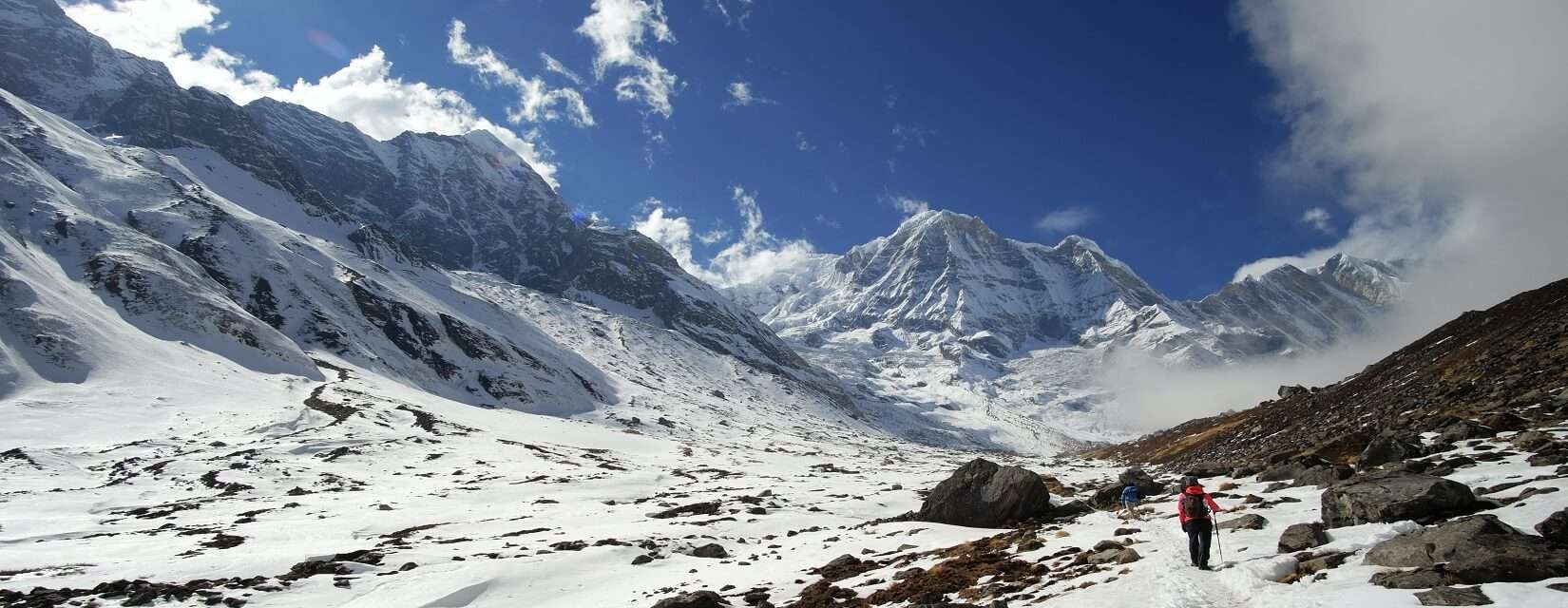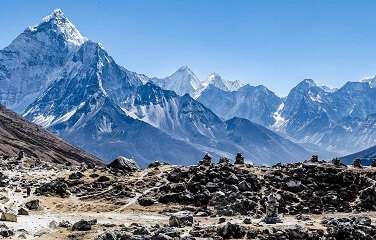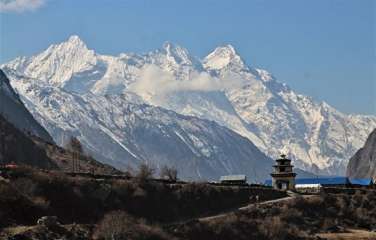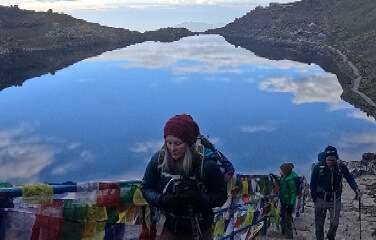Annapurna Base Camp Trek during autumn

After the monsoon, autumn in Nepal occurs in September, October, and November. Additionally, it is the start of winter. Among all the seasons, autumn has some of the best weather. Trekkers do not need to worry about the monsoon rain and bitter winter cold because it is both the post-monsoon and pre-winter seasons. The weather continues to be moderate—hot during the day and chilly at night and in the morning. The Annapurna range can be seen in breathtaking detail thanks to the day's clear skies. Around this time, the average daytime temperature ranges from 12 to 20 degrees Celsius.
While at night, the temperature typically falls to minus 3 to 4 degrees Celsius. Additionally, it is harvest time, so you will encounter farmers tending to their crops in the field. Overall, the only drawback of traveling during this time of year is how crowded this trail is. If you like meeting new people, you'll probably run into at least two or three trekkers in a span of an hour on the trails. The crowded teahouse won't be enjoyable if you don't enjoy being around people, though. Overall, it is one of the best times to complete the Annapurna Base Camp Trek in terms of weather.
Annapurna Base Camp Trek during spring

The vibrant spring season (March, April, and May), which is one of the best times to trek to Annapurna Base Camp, follows the chilly and depressing winter months. Nepal experiences spring from March through May. Springtime weather is ideal for hiking because it's neither too hot nor too cold. During the spring, the typical daytime temperature ranges from 16 to 22 degrees Celsius or 61 to 68 degrees Fahrenheit. Up to 2 or 3 degrees Celsius, or 27 or 28 degrees Fahrenheit, could drop off the thermometer during the night.
In the spring, the sky is clear, allowing you to take in uninterrupted views of the stunning Himalayan ranges. There is a chance of rain in the spring, but it rarely lasts long. For a springtime trek to Annapurna Base Camp, it will be a good idea to bring a lightweight raincoat. The haze may also obscure views of the mountains. Well, rhododendron bloom time has arrived, and the trails will soon be carpeted in vibrant flowers. Rhododendrons and other wildflowers in shades of red, yellow, pink, and white make the trail particularly attractive.
There will be a lot of people because it is the best time to visit Annapurna Base Camp Trek. You will come into contact with people from all walks of life and from all over the world. You will enjoy the trek if you enjoy interacting with others. However, it might be a little challenging if you're hoping to trek in solitude.
Annapurna Base Camp Trek in Summer (Monsoon) Season

In Nepal, the rainy season is the summertime. High temperatures and torrential rain are both experienced at this time. Mountainous areas typically have cloud cover, and the lower trekking routes in the Annapurna region are muddy. However, this does not imply that you won't be able to see the Himalayas at their splendor during this time. One benefit of the monsoon is that it won't rain all day every day or even all day every day. You must therefore prepare for heavy rain and wear appropriate clothing. You can do the Annapurna Base Camp Trek if the rain doesn't bother you.
The benefit of trekking during monsoon season is that rain keeps the pollution and dust at bay, giving you the best possible view of the lush landscape. The world heritage site and numerous historic Buddhist monasteries are still visible. Additionally, you can interact with the locals in a wonderful way and learn about their distinct culture, traditions, and way of life. Over your layers, you can put on a thin hard shell rain jacket. Additionally, it will enable you to wear the jacket in hotter parts of the trail. You can layer your warm winter jacket over the hard shell at higher altitudes where it's colder. You won't run into many hikers either. The trek is ultimately lovely because of the added benefit of seeing the gorgeous flora and fauna.
Annapurna Base Camp Trek in Winter

Except for the occasional snowfall and morning mist, the views are generally regarded as being at their best when they are dry and crystal clear in the winter. Winter is a pretty unique time of year, provided you are prepared for the chilly weather. Wintertime weather is calm, and you can take in the breathtaking panoramic views of the Annapurna and its neighboring peaks.
You have the best and clearest view of the entire year on a clear day. However, because the days are shorter, you get less time for hiking than during other seasons. The area is completely covered in thick layers of snow, including the trails. Only a few hikers set out on this journey during the winter, so the trail is silent. In particular, there is a lot of Avalanche risk in the winter. During the off-season of winter, the majority of tea houses are still on vacation.
The Two Main Months for Trekking

The Annapurna region's primary trekking months are annually between April and October. a warning about the peril and risks associated with climbing and trekking in Nepal. At the time of the earthquake, Ian was in Kathmandu. You are welcome to read more about that encounter HERE. Following the 2015 earthquakes, the trail is once again fully utilized by a large number of people in the Annapurna region. You must take into account both the weather and the fact that more people will be on the trail during the months with better weather when making your decision.
Recommend Treks in Nepal





